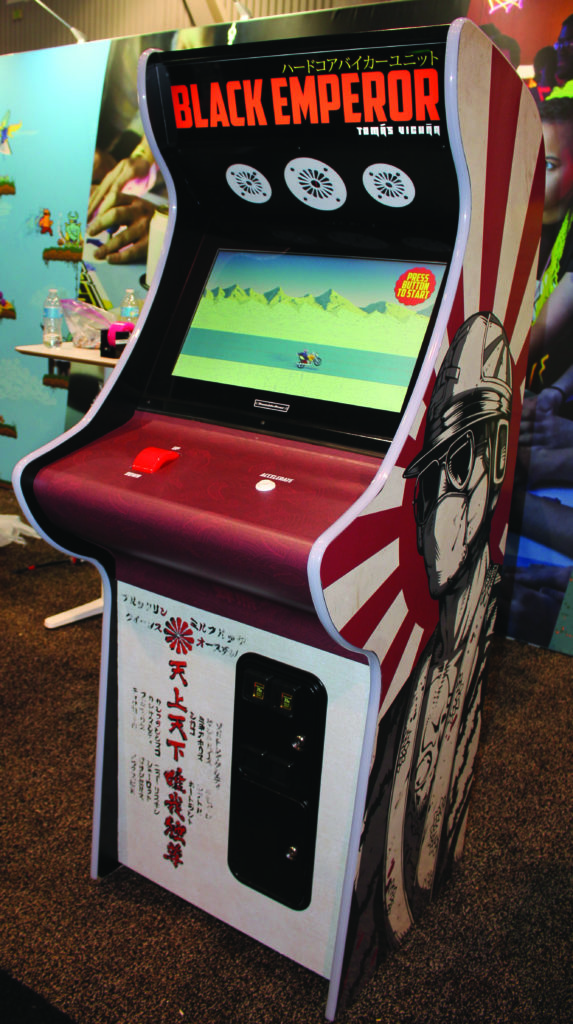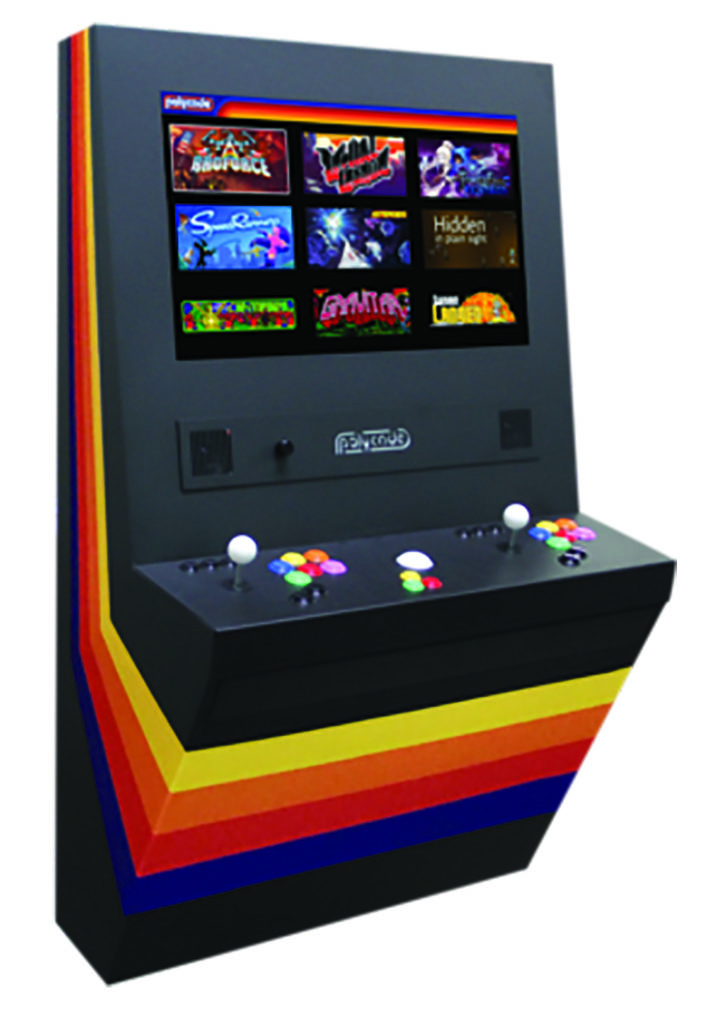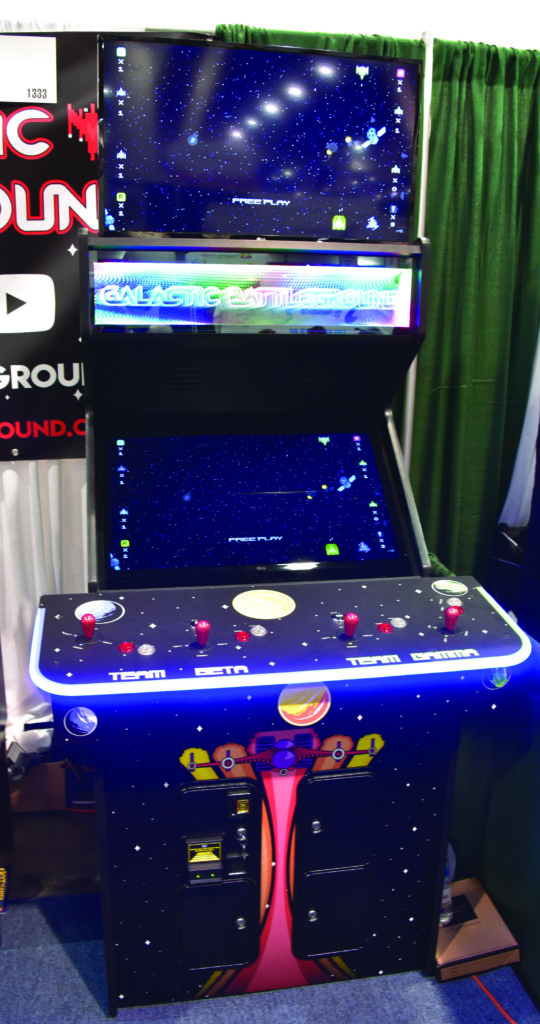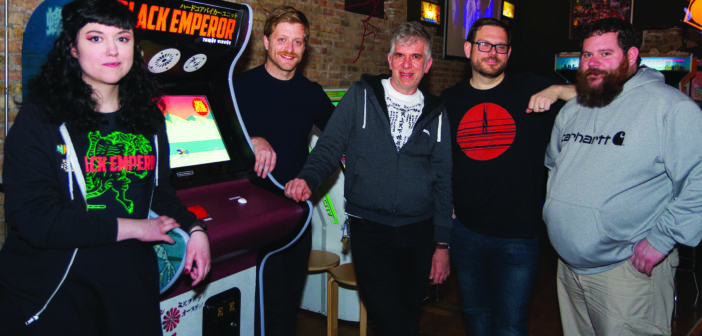Are Video Games Worth It Today?
An Examination of Developments Shown at Expo
by Adam Pratt, Game Grid Arcade & ArcadeHeroes.com
Another lovely spring season is upon us, and hopefully it will be a prosperous one for each of you. So far, this year has been solid for my operations, with the new route I detailed in a previous article becoming settled after spending a few weeks chasing repairs. In the midst of that, I’ve noticed an uptick in an item of interest that will be the subject of today’s article – customer reviews.
Before I opened my arcade back in 2008, I attended my first industry trade show, then known as ASI 2008. It was held in Las Vegas, as many of them are, and I got a chance to see firsthand many of the games that I had only read about previously.

“Indie” games were well represented at Amusement Expo from companies like BumbleBear, which not only showed its popular Killer Queen video game, but also their new motorcycle racer, Black Emperor.
Since then, I have attended many shows, visiting most of the ASI/AMOA/AEI expos that take place in Vegas, especially since that’s a mere hour flight away from my home in Utah. While many of those visitations have blended together in my memory, I have a feeling that AEI 2019 will stick with me for a long time.
This was the busiest spring show I have attended to date. In part, I think that was due to a higher number of product introductions than usuall. That’s always great, but equally worthwhile was reconnecting with many old friends and making new ones.
As a part of those connections, I had a very interesting conversation with fellow RePlay writer and industry vet, Frank Seninsky. He asked me a pointed question that gets at the heart of what I do as both an operator and a blogger for the arcade business. To paraphrase, he asked: “Where do you see the strength in video? I don’t see it.”
His point was that in all of the locations he operates, redemption is the king of earnings. I won’t dispute that, as I know that’s what most of you see. For my part, the only redemption I have in my mall arcade are a couple of merchandisers and bulk vending machines. The rest is amusement – the video games, pinballs, sports games and a couple of other oddities.
This puts me in a comparatively different place since my revenues come mostly from video games. “But you can make a lot more money with redemption” is likely the thought that comes to your mind. Perhaps, although in my situation and location, the merchandisers haven’t been the #1 earners every week. Those have been and continue to be my new video games. Will that change when the mega FEC opens their doors just a short walk down the hall this summer? Probably. I’m bracing for the worst, but I don’t believe that converting into a clone redemption arcade will be the survival solution.
Why do I hold to my stance on video so strongly? Well, long before I was in business, I was playing video games. I grew up with the Atari 2600, the NES, the Sega Genesis and every iteration of PC back when they were calling them 286, 386, 486 and so on. I’m no Billy Mitchell or Steve Wiebe skill-wise, but I can get by okay and I truly enjoy gaming. It’s fun and I enjoy the challenge of pushing myself to get a better score the next time. Only in the arcade have I experienced the moments of seeing a spontaneous crowd form around me to watch me play a game exceptionally well. I have always found that more satisfying than playing for tickets and trinkets. I know it’s a minority position in this business, but that’s where I’m coming from.
As I’ve seen it, redemption doesn’t need much help when it comes to touting its virtues. You can set such machines into locations and they’ll earn. They don’t need word of mouth or tournaments like video does. Admittedly, this makes video games a much larger challenge to work with from an earnings perspective, but that’s okay. I’m happy to “fight the good fight” of promoting video games.

The wall-mount version of Polycade that comes with content loaded in, with updates generated by the manufacturer (available in home and business models as well as commerical, “pay to play” units). They also are in production with their four-player uprights.
Apart from topping the charts at my venue, I’ve seen them do exceptionally well when tied to tournaments. I wrote about those earlier last year, so I’ll refer you to that article for details, although the concept of tournaments and leagues does recall another point that came to the front at Amusement Expo 2019.
I am always asked what impressed me the most at these events and this year wasn’t so much a single product as it was a particular group of them: independently-made games, more commonly known as “indie games.” We’ve seen a few here and there over the years, but the concentration of what was at AEI19 was more than I recall seeing in the past. Growth in this area is a response to the needs of smaller venues like mine: bar arcades, retrocades and street operations.
The better known of these games was Killer Queen Arcade by BumbleBear Games. While the game has been in production since 2013, it has grown into a phenomenon that has directly influenced almost every indie game we are seeing on the market right now. The success of Killer Queen continues to come from leagues that seem to spring up everywhere the game is found. The good news is that the game is now in full production.
Three other indie games at AEI19 were also hoping to carve out their own niche from building upon multiplayer fun – Retro Raccoons by Glitchbit and Incredible Technologies, Galactic Battleground by Slackerz Inc. and Paradise Arcade and Polycade by the company of the same name.
Retro Raccoons supports up to four players and features a number of mini-games that you play (similar to Mario Party), along with the unique (but optional) bar element of forcing losers of a mini-game to take a sip of their drink.

Slackerz had Galactic Battleground, showing it in this upright, plus a cocktail table.
Galactic Battleground plays on retro nostalgia by combining elements of Asteroids, Galaga and some of its own unique features for 1-4 players.
Polycade is more of an arcade “vehicle” to deliver content to locations, curated with popular titles from the Steam platform that can also support between 2-4 players depending upon the game and cabinet configuration.
Time will tell how these do, but they do stand to fill a need for many venues.
They are also not alone. AEI19 saw the presence of other indie titles like Black Emperor (BumbleBear Games) and World’s Fastest Drummer (Unit-e); for games not at the show, you have Cosmotrons (Arcadeaholics), DeathBall (Tony Hauber) and Step ManiaX (Step Revolution, makers of ReRave). Then there’s also a flood of indie content set to hit arcades this summer when the Exa-Arcadia platform launches, bringing over a dozen modern titles to the market in a Neo Geo MVS type package, but with other modern features like Twitch streaming and exclusive content.
It’s an exciting time to be in the amusement business. This March was the most profitable month I’ve had since opening in June 2008. I’m confident that this year will be the best of them all, and I hope the same for you in your operations!
Adam Pratt is the owner and operator of Arcade Galactic near Salt Lake City, Utah, and also publishes the Arcade Heroes blog site. He can be reached at [email protected].





